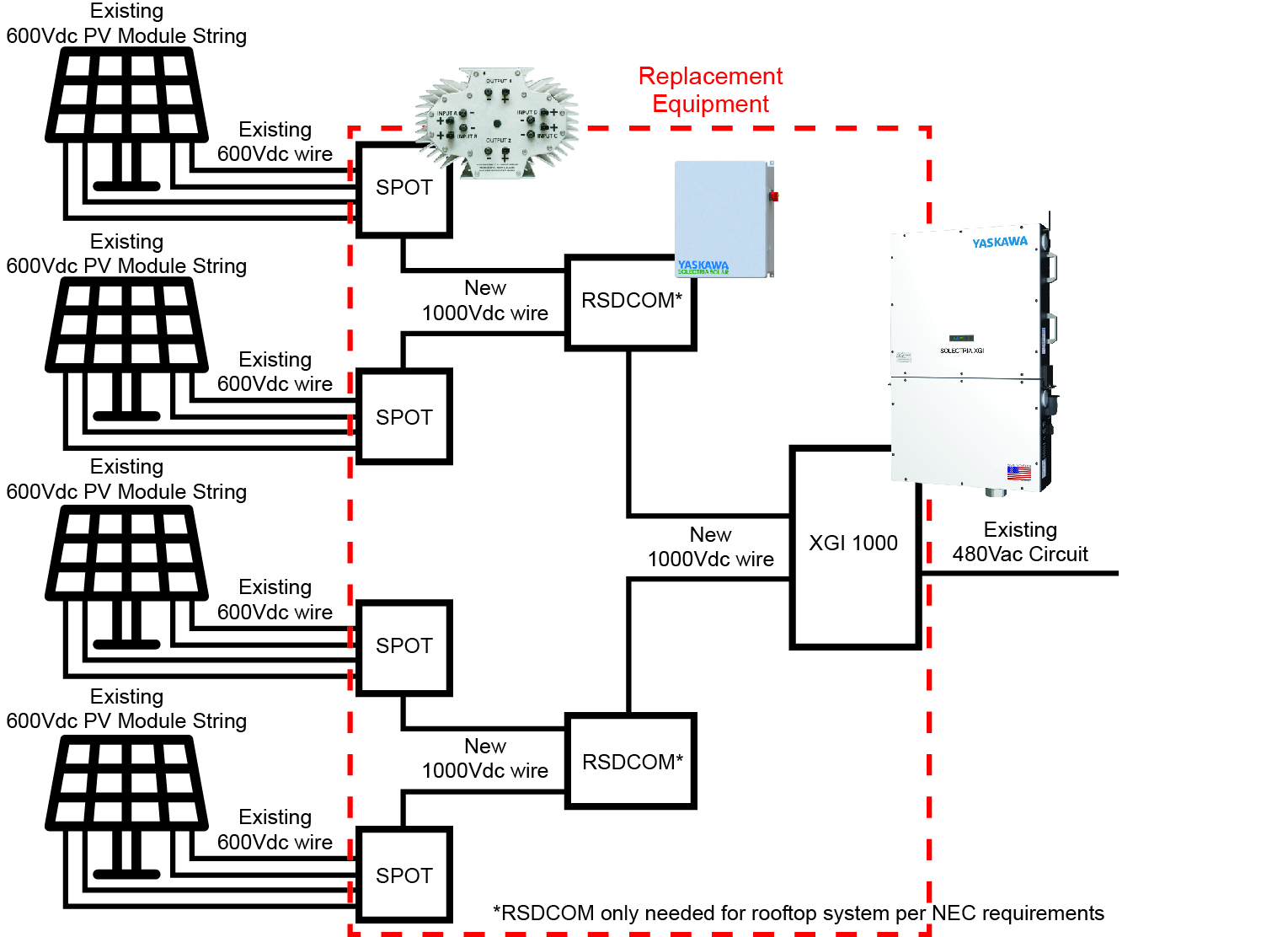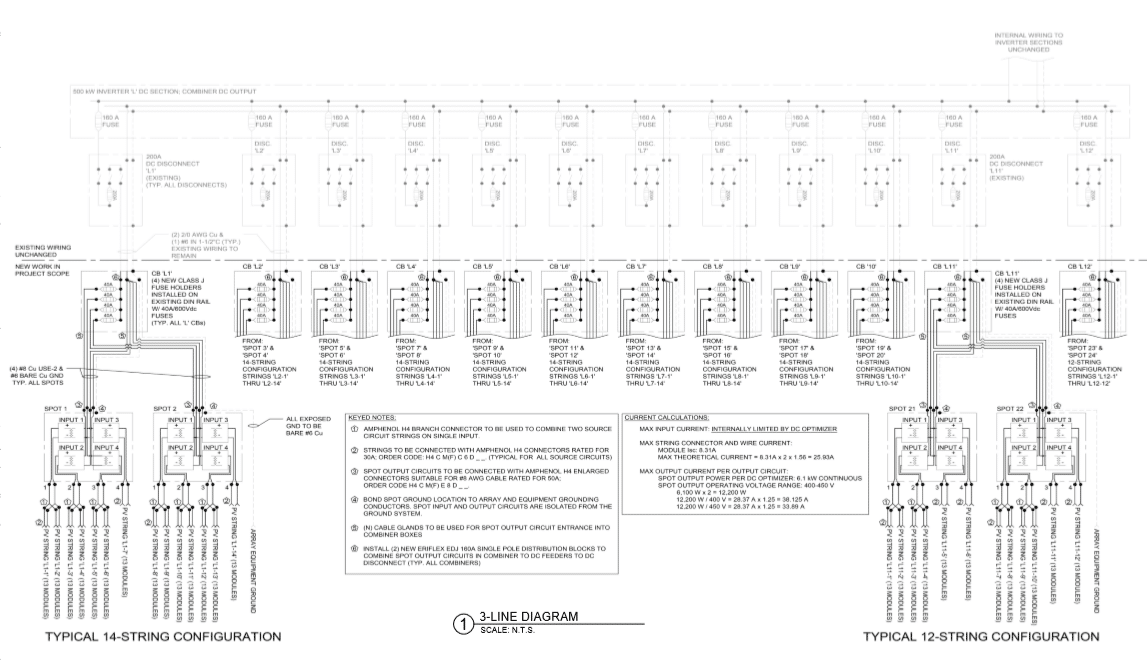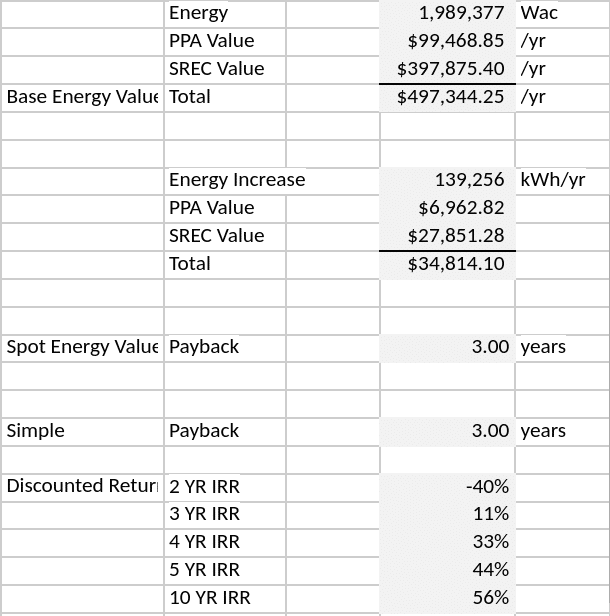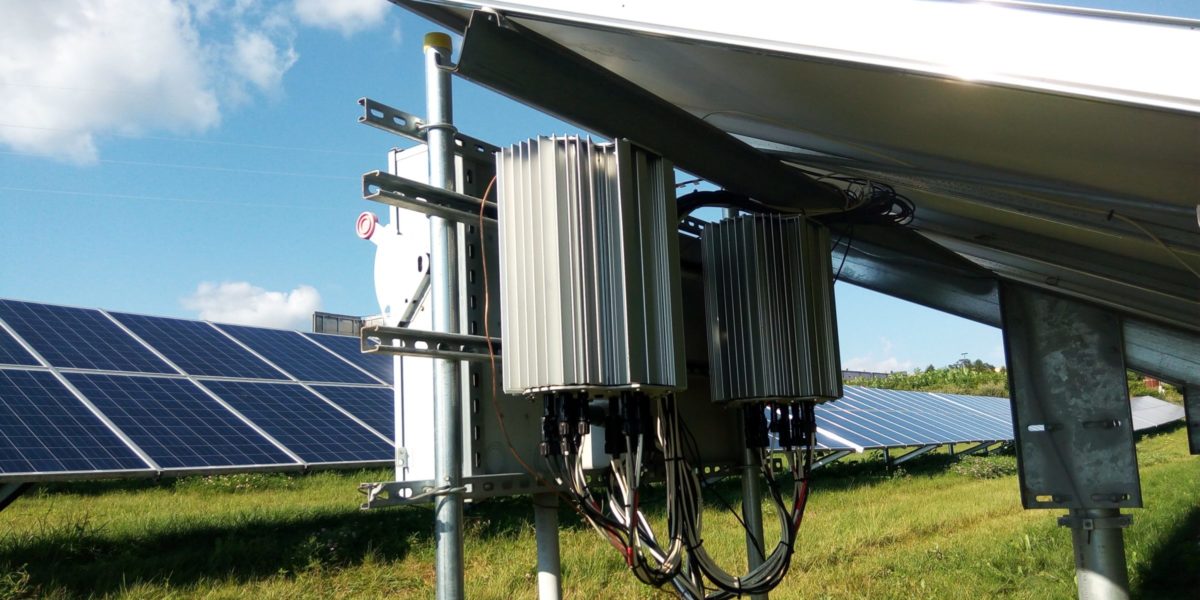pv magazine USA spoke with Alencon Systems President Hanan Fishman to learn more about what it means to repower a solar power plant.
Alencon of Hatboro, Pennsylvania builds two pieces of hardware – the SPOT and BOSS (based on the increasingly important material silicon carbide) while also offering a “repowering value engineering service.” The markets serviced by Alencon – repowering aged solar facilities and DC-coupling energy storage – are niches relatively new to the fifty year-old solar module business.
There are two main reasons to repower a solar power system – “need versus greed.” The need to repower is increasingly arising as inverters meet their end-of-life and comparable 600-volt hardware no longer exists. Alencon’s String Power Optimizers and Transmitters (SPOTs) take voltages at one value and output them at exactly what the new hardware requires.

The above image shows a simplified repowering due to need. The facility needed to replace its inverters that were taking in 600-volt solar module strings, and outputting at the standard 480 volts. That means wiring, combiners, and inverters to be replaced. The area within the dotted red lines represents hardware that replaced the old – and it started with Alencon’s SPOT taking in the 600Vdc solar module strings and outputting them at 1000Vdc. These outputs were wired into new Solectria combiners, which then pushed the electricity to new Solectria 1000-Volt inverters.
The wiring diagrams below of an example facility show the organized complexity of a large rewiring. The lower half of the drawing shows the new solar module strings coming into Alencon’s SPOT, while the top half notes the existing wiring that didn’t have to be changed.

Fishman noted that the cost of the SPOT hardware is only one aspect, and a smaller one, of the broader work needed to be done to repower a site. And for repowering to be viable — it has to be done economically.
The company has a spreadsheet that looks a lot like a standard solar power facility return-on-investment calculator, but instead, the version pv magazine USA reviewed (excerpted below) focuses on the cost of new hardware and the increase in output.

Here we start to learn a bit more about the greed of upgrading facilities. If we know the hard math it’ll cost to switch out new hardware, and there exists improved hardware (such as better trackers or bifacial modules) that can increase the generation of a site – at what financial moment does the upgrade make sense?
The answer comes from a combination of factors, which include the amount of new generation, the rate the site is paid for said generation, the challenge of getting a new interconnection agreement, and the cost of money for the developer. And of course, the human labor costs of moving around gear – something that Alencon says needs as much focus to gain cost effectiveness during engineering processes designing the installation of its hardware.
All these variables are very similar to the original spreadsheet models of solar power projects.
In order to build a wind- and solar-powered grid — a lot of new hardware and new ideas will be needed. We might use a new type of solar cell; we’re going to interact with nature differently; we’re going to have to deploy solar in a lot of new places.
And we’re going to have to work with already deployed hardware in a different fashion – repowering or repairing sites as required or desired.
Stay tuned for coverage of Alencon’s BOSS product – because DC-coupled energy storage is how many future plants will be operated.
This content is protected by copyright and may not be reused. If you want to cooperate with us and would like to reuse some of our content, please contact: editors@pv-magazine.com.








Hii, We are aluminium profile manufacturer in Mumbai, India, most of our projects are based on customized profiles, If need then please send us drawing or reference picture so we can send you the Feasibility & Estimation.
Thank you John Weaver, it seems like the electric utility industry has taken the next step into the non-fueled generation future. As you have stated, getting higher voltage inverters with more energy efficiency technology, can save money and generate more power with small CIP upgrades. With the bifacial solar PV ‘wave’ expected to hit this year and next, online solar PV farms may just find replacing solar PV strings with bifacial panels, will increase the power plant’s yield and profits with the same foot print. Amortization periods should be 1/4 or less than the current multi-decade fueled generation facilities.
Really, the technology allows the solar PV or wind generation owner to actually add production generation without buying new property, re-engineering the entire plant or “decommissioning” and building another plant to increase output. Just replace old equipment with the latest/greatest technology using CIP of the plant operations. The actual demand and response can be tailored to the area of service. If one needs more power generated for a longer period of time. Take half of the solar PV strings and replace them with bifacial solar PV and single axis trackers. Replace in strings over a period of months or years to get the biggest bang for the buck.